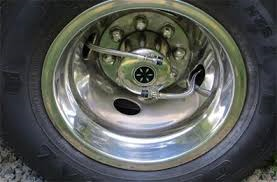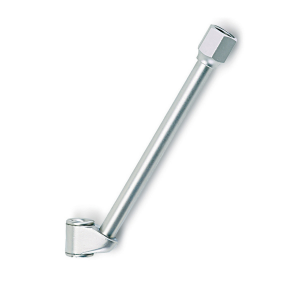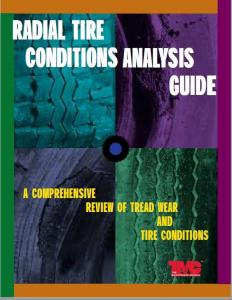-
Content Count
952 -
Joined
-
Last visited
-
Days Won
9
Posts posted by tireman9
-
-
Test message trying to update signature
-
Just logged in again. Checked the Sig under My Profile. It is correct as it says I will be at Tuscon this March.
This post is a check. If it says Gillette there is some problem with the program.
-
1 hour ago, wildebill308 said:Did you save the changes when you exited? Try it again.
Bill
Yes I saved the changes. i have tested with 2 different computers. When I go to my profile it has been updated but my posts do not show the change.
-
I have updated by Signature under my "Profile" but the new sig does not display
-
Your tire says "Max xx psi at Max Load of yyy Pounds" Will your tire blow up if you go above xx psi?
The simple answer is No. Your undamaged tires are not going to Blowout or Explode or Blowup if you see a pressure greater than xx psi on your TPMS or on your hand gauge.
There is a lot of confusion out there because people do not understand the reason for the confusing wording that is mandated by DOT.
There are Federal regulations on the words and information that must be molded on the tire sidewall. This wording has been around for years with some unchanged since the 1960's.
A recent poll of RV owners responding to a question on tire inflation number on the tire sidewall indicates that 18% think the inflation number molded on a tire sidewall number is the absolute highest a tire should ever have in it. Another 18% think that inflation is "the best" inflation for the tire 2% think it's the lowest pressure the tire should ever have. I am very disappointed with this level of confusion.
Here is the reality:
Each type and size tire and Load Range has a stated Maximum load it should ever be subjected to. The number is molded on the tire sidewall in both pounds and Kg. The tire industry has published tables that provide the MINIMUM inflation a given tire needs to support a stated load. The tables clearly state that the inflation number is the inflation measured before the tire is driven or warmed by direct sunlight. This is called "Cold Inflation". Not "Refrigerated" inflation and not some laboratory 68F or 70F "standard, but the inflation that would be the same as the surrounding ambient air. Some people know this as the "Temperature in the shade".
The confusion comes about because until recently vehicle owners never knew the operating temperature and pressure of their tires. However with the introduction of aftermarket TPMS as used by many RV owners, they now have those numbers presented to them.
What is missing are two things. One being training by the selling dealer as to what inflation is needed to support the stated load and second an explanation of what the words on the tire actually mean.
I am not sure if the RV salesman has ever received the training other than to tell the customer the information is in the Owner's Manual.
Hopefully when an RV owner reads "Max Load" they understand that they should never load the tire more than that.
The confusion comes with the inclusion of the word Max as it relates to tire pressure.
IMO the wording would be much better and more logical if the tire said "Max Load yyyy pounds at xx Psi cold".
I would leave it up to the people at DOT to try and explain why they were not consistent across all types of tires with the wording on load and inflation limits, but I have no idea who to ask. as I expect them to pass the question off and say "Ask the tire manufacturer" but the manufacturer is only following the regulations established by DOT.
I have covered the topics of Load & Inflation many times in my blog www,RVTireSafety.net
you should be able to find the answers to your tire questions there.
I have a large number of posts in my blog that mention inflation. If you have questions I can suggest you review my posts as the questions are asked a few different ways and I provide the answer with what I believe is a consistent interpretation of the intent of the requirements.
-
I have been happy with TireTraker and their new units offer Lifetime warranty
-
When getting new tires be sure to record the full DOT serial (or snap a picture of each). This eliminates the need to crawl around after they are on the RV. Keep that info with your other important information.
If there is a recall you will have the needed info at your fingertips.
-
Thanks Herman. Very helpful post.
-
3 hours ago, rcross said:i know the range that is on the side of my tires, and have had my coach weight on each corner, is there more to it then that?
Do you have a Load & Inflation table for Michelin tires of that size?
Using your "4 corner weights" find heaviest tire on an axle. Then find the minimum inflation needed to support 115% to 125% of the heaviest end (depending on how much margin you feel you need). Then you know the inflation to set your tires too
-
I have no data but the higher Load Range F > H will probably not impact ride in a meaningful way.
An advantage of the LR-H is the ability to run higher inflation to give you a higher Reserve Load (excess capacity) I would suggest a nice 15% based on the Load Inflation tables is possible. You do know what your actual tire loads are don't you?
-
Valve stem extensions come in two "flavors". One being a longer metal stem the other is some sort of "extender" that screws onto the end of a standard stem.
If you chose the long metal stem route, you probably should have them installed by a tire shop that services Heavy trucks as they have the experience and should know how to install properly. The stem for the inner tire can be straight or almost straight but needs to be long enough to come through the outer wheel "hand hole". The long stem may look like this one.
The outer stem can be a regular brass stem like this one.

it will help if you have a "dual foot" inflator tool. Like this.
If you have short metal stems as shown above and a "Dual-Foot" inflation adapter you should be able to get to both the inner and outer short stems.
The above doesn't answer the question for those that use TPMS or want easy access to allow measurement of tire pressure. You can use Hose extenders BUT you REALLY need to pay attention to the following:
1. Be sure to tighten the hose properly. That means no leaks (test with some soapy water) and not over-tighten. I screw the hose on till the air stops leaking then tighten about 1 additional turn. I then check and confirm no air leak.
2. The outer end needs to be SOLIDLY attached. I use pop-rivets and the small 'L" bracket that comes with the Wheel Master stainless steel hose kit #8001 or #8005 depending on wheel diameter. Like this. (shown with TPMS sensor)

3. When adding air you should hold the hose so you are not loosening the attachment point.
4. Do Not over-tighten the hose extenders. There are small rubber "O" ring gasket seals that can be torn resulting in a slow leak.
5 As with all rubber parts, I had one of my hose seals fail after 8 years. The rubber in any seal can eventually fail due to "old-age". This applies to hoses, rubber valve stems and any other rubber part in your car, truck or RV. One advantage of my using a TPMS I was able to see the slow ( 2 - 3 psi per hour) and after a close inspection of the hose extender confirmed the "blowout" of the "O" ring
-
I think the better way to specify a lug nut is the size of the socket that fits the nut and the size and threads per inch on the stud. Any auto parts store can help you confirm those dimensions if you take in a lug nut,
I would also think that appropriate lug nuts with a SS cover should be available from the Auto Parts stores. I doubt that they are unique to the wheel simulators you have.
-
1 minute ago, smoltzie said:Interesting, tires were new & inflated to spec. Michelin dealer called it zippering & Michelin ok’d replacement of two tires. Still interested in recommendations for good riding tires.
Didn't your TPMS sound a warning? If not I suggest you confirm the low pressure alarm level (no lower than 5 psi below the minimum inflation needed to support the measured load on the tires.
You can fail a tire in just a few minutes of operation at extreme low inflation. BUT Just parking on a flat tire with steel body cords can "kink" the steel so that when inflated and driving down the road the "kink" is a stress riser and the "Zipper" can start.
-
On 9/27/2021 at 10:09 PM, smoltzie said:Needing new tires & thinking of using the FMCA Discount Tire Program. Have a 40 ft class A diesel pusher. It had Michelin’s on it when I bought it & they have not served us well (two blow outs, Michelin called it “zippering”) . Have 275/80R22.5 tires now. Thinking of changing to 275/70R22.5. Looking for a better ride but with the traction, good handling in the rain etc. What tires have y’all bought with or without the program? Any info appreciated.
"Zippering" is the name for the failure mode when steel body tires are run with very low inflation (-20% or lower). You can get this failure on any brand Steel body tire. I suggest you get a TPMS which can warn you of air loss and with the cost of your size tires a single warning can pay for the TPMS system.
Here is a post from my RV Tire Safety blog with a picture of such a failure. There is a link to an article on Zipper failures in my post too.
-
If you change brand or size just be sure the replacements carry equal or greater load capacity.
-
Yup go to a dealer of that brand tire where they can inspect to confirm the "damage" is only cosmetic or structural.
-
Sorry folks. Looks like I fell down on the job of monitoring this forum.
RE: eric@babin the OP. The wear is not "Damage" but is what is called River Wear. There was a similar post on an RV forum and it is a wear pattern that can occur on non-drive positions.
According to the Tire Maintenance Counsel Division of The American Trucking Association "Radial Tire Conditions Analysis Guide"
It is called "Erosion/River/Channel wear" It' appearance is Circumferential wear along rib edges next to a major groove. The "Cause" A slow wear rate on free rolling axles. It may vary with individual tread designs. They say "Erosion wear should not be of concern"
You could try reversing the direction of rotation by swapping tire position or place the tires on a drive position.
This condition is not covered in the link that RAYIN shared but is covered in the TMC Radial Tire Conditions Analysis Guide You can order a copy HERE.
It is a bit pricy for non-tire engineer but at over 140 pages it covers just about any tire condition you might run into.
-
DOT serial
in Tires
11 hours ago, rayin said:Great advice Roger! If I may add, I've read it's a good idea to register those numbers (when buying tires) with the tire mfgr. to help them contact owners of tires with defect notices or recalls. Some dealers do this as a matter of service.
Thanks.
Yes ALL tires sold are suppose to be registered so the owner can me notified if there is a recall. BUT many do not bother.
I covered the topic of Registration in THIS post. The post includes links to allow you to register your own tires or to send new contact information.
-
DOT serial
in Tires
Some comments on DOT date code.re "oval" Tire mfg use different methods of changing the aluminum"plug" in their molds for the "date code". Not all use an oval plug. Some have used stamped steel strip or "tin" so it can have a different appearance.Some things that is true about all DOT serialThe code comes AFTER the symbol DOT by lawThe first 2 characters are a plant code. the next 2 are a size code.The last 4 numbers are the date code.The serial may have as few as 8 characters and as many as 13 with most having 12 or 13.The date part of the serial only is required on ONE SIDE so may not be on the curb side but facing in toward the coach.My advice is to find the code and record it when it is convenient to you. Nice weather day. If needed i have suggested a $5 or $10 bill and a flashlight and a 10 year old to craul under the coach if needed.Remember you may need to "roll" the RV forward or back a few feet to get the serial in a position that the 10 year old can see it.Keep the full serial with your other important part numbers as you never know when you will need this information. -
People need to be very careful when switching tire type from ST to LT as you will need to go up in size or up in Load Range (inflation), or both to carry the load. It is also important to have a MINIMUM of 10% Reserve Load (Capacity over measured load) with 15% to 20% better.
-
My interpretation is that it is basically a tire with a TPMS sensor attached to the inside of the tire.
-
"What is the Best Tire" is a little like Chevy vs Ford or Coke vs Pepsi as long as you stick with Tier 1 and 2
I would include availability of company stores that can provide service. Mail-order can save you money up front but offering service can easily be more important.
-
Been using Surge Guard 30A unit for 3 years. It has warned me a couple times of miswired power pedestal.
last week on my way from Ohio to Gillette I used the Surge Guard the first night with no problem. The second night
it went through its normal check and all was OK, but when I connected the RV plug I had no power in the RV! Did this a couple times
but never got power to the RV. I pulled the Surge Guard out of the system and plugged the RV directly and all was OK. I could not figure out
why I could not plug the RV cord into the Surge Guard. For the rest of the trip I was able to plug things in normally with the Surge Guard in the system.
I figure there is a relay and switch inside the Surge Guard and the switch is failing.
Is the Surge Guard rebuild-able?
-
On 4/6/2021 at 1:43 PM, urbanhermit said:Have a 2006 Monaco Cayman 35, GRVW 33,000. It is shod with Goodyear 670s in 255/70 R22.5, all six years old. I like their performance. Road noise doesn't rise to conscious level, no wandering, only the slightest wind push from passing semis (have a steering stabilizer). Good tread, no cracks in the side walls, but I assume at their prudent replacement age. A heavy truck tire/chassis shop recommends Hankooks. Pretty good price, $2,845 out the door with glass beads. A mostly auto discount tire store quoted $3,141 for six of the same Goodyears, tires and tax only -- no mounting or balancing. I consider that a benchmark, not a price to consider. Any advice about Hankoooks or other empassioned recommendations?
Be careful with "beads". Some tire companies may VOID the warranty if they learn you have used something inside the tire.







Signature doesn't match Profile
in Forum Support
Posted · Report reply
All appears fixed.